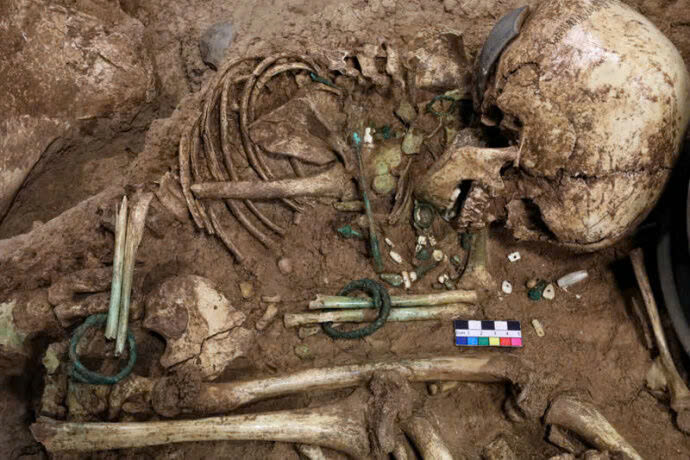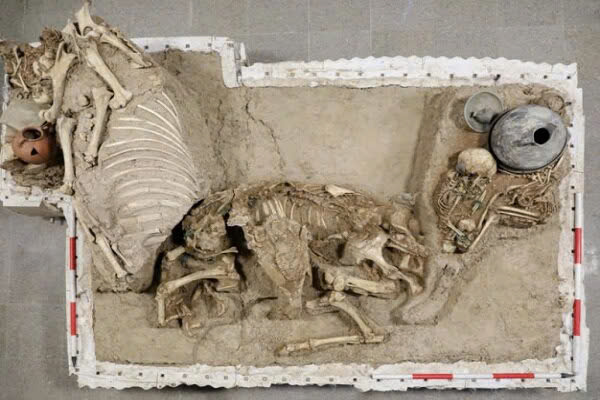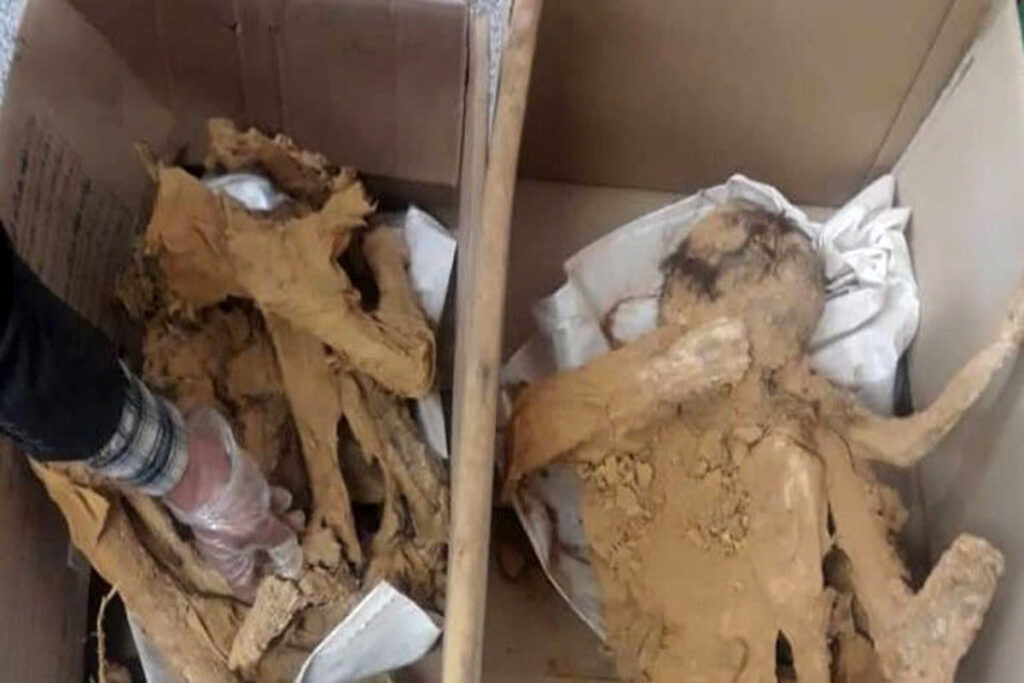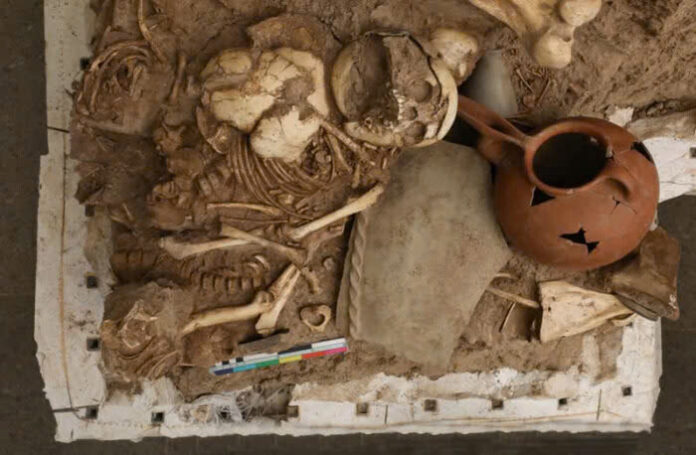Archaeologists Uncover 3,000-Year-Old Remains in Qazvin Province

In a groundbreaking discovery, archaeologists from the University of Tehran have unearthed a mysterious ancient cemetery in the Segzabad region of Qazvin province, central-west Iran. The excavation, led by Dr. Mustafa Deh Pahlavan, has revealed a complex burial site dating back 3,000 years, offering intriguing insights into the funerary practices of an ancient civilization.
A Remarkable Find in Five Square Meters

The excavation site, spanning just five square meters and reaching a height of 120 cm, yielded an astonishing array of remains. Dr. Deh Pahlavan, who heads the Institute of Archeology at the University of Tehran, described the discovery:
“This complex, weighing about 10 tons, includes the remains of nine children, a baby, and a fetus, alongside two adult horses, two goats, and a sheep.”
Unusual Burial Practices and Animal Sacrifices
The eastern cemetery of Qara Tepe revealed five layers of burials stacked on top of each other, with graves lacking a specific orientation. Clay ridges surrounded the burial plots, and researchers found evidence of a unique practice: aborted fetuses and babies were buried in clay cooking pots.

Perhaps most intriguing was the consistent presence of animal remains in all graves. Dr. Deh Pahlavan noted:
“Without exception, we found remains of animals such as goats, immature sheep, cows, camels, and horses in all the graves, indicating that animals were buried alongside the dead.”
A Child of Special Status
Among the discoveries was a child’s skeleton accompanied by clay dishes, bronze bracelets, a ring, and a necklace made of stone, bronze, and ivory beads. These burial ornaments suggest the child may have held a special social status.
Horses with Bronze and Iron Trappings

In one section of the burial complex, archaeologists uncovered two adult horses of different breeds. One horse, possibly of the Caspian breed, was found wearing a necklace with bronze beads and an iron bridle, hinting at the importance of horses in this ancient society.
Preserving the Past
Due to the unfavorable conditions at the Qara Tepe cemetery, the entire collection has been carefully moved to Segzabad municipality. Here, it will be displayed and preserved according to conservation and restoration standards, ensuring that this remarkable window into the past remains intact for future study and appreciation.

This extraordinary find not only sheds light on ancient burial practices but also raises intriguing questions about the social structure, beliefs, and animal husbandry of this 3,000-year-old civilization. As researchers continue to analyze the remains, we may soon uncover more secrets from this fascinating chapter of human history.

